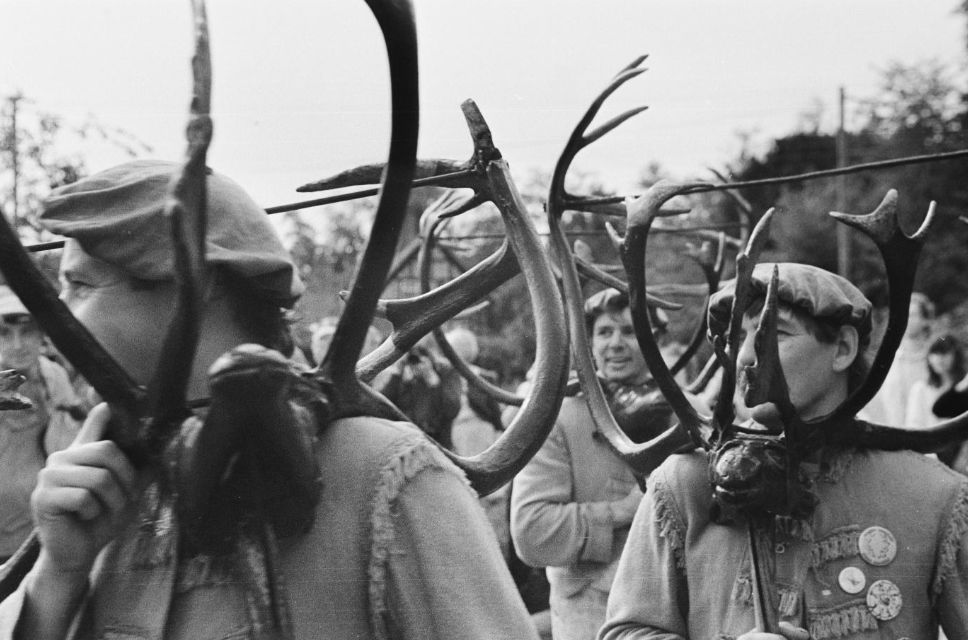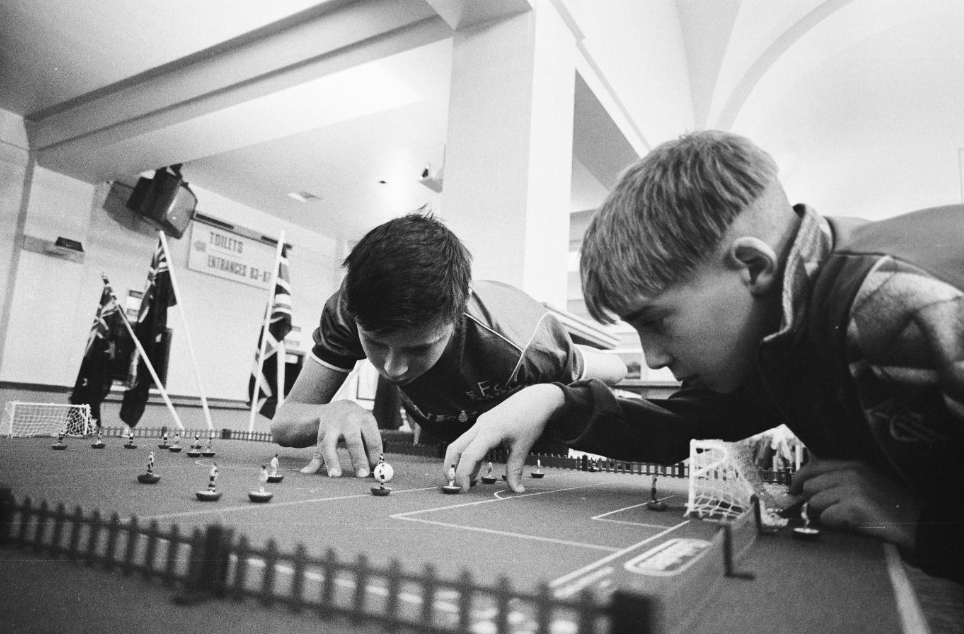Michael-John Jennings, News UK’s archive specialist, on the projects that The Times archive has been working on this month
Gordon Mattison rehearsing for the Gurning World Championships at the Egremont Crab Fair in January 1977
A series of quintessentially British traditions occur in September heralding scenes of dancing, face-pulling and quirky seasonal shenanigans. The goal is simple at the World Gurning Championships at the Egremont Crab Fair in Cumbria: “Pull the most hideous mug, you win.”
Ian Wright goes close up for the remarkable transformation by the lead contender Gordon Mattison during his practice session.
Mattison, the four-time champion, was in training for a potential international bout against a Florida-based gurner. The fair committee warned that they may not let him go because the championship has always been held in Egremont. “It could get ugly,” they said.
Locals in Abbots Bromley, Staffordshire, hold their annual Horn Dance on September 10, 1990
The dance was traditionally intended to ensure successful hunting
Giving it horns
The Abbots Bromley Horn Dance is believed to be the oldest folk dance in Britain, dating back to 1226. Reindeer antlers are donned by “deer men” in the performance in the tiny Staffordshire village every September, marking hunting season and to celebrate their harvest.
The earliest mention in The Times comes from 1919 as the Horn Dance resumed after “being allowed to lapse during the war, its first break in four centuries”. Peter Trievnor visited the village in 1990 for The Times, capturing a scene of “horns aplenty”.
The article reported that in 1976 one of the ancient horns was damaged and a small chip on the bone was carbon-dated back to 1065, originating from Scandinavia, but “why they should have been taken to Abbots Bromley remains a mystery”.
The 40th anniversary of the annual Brambles cricket fixture was celebrated on September 20. The match is played on Bramble Bank, an arrow-shaped sandbar in the Solent that is only visible at low tide
Peter Dunne captures the rebirth of the tradition in 1984
Bowled over
The annual cricket fixture played on Bramble Sands celebrated its 40th anniversary this year and Peter Tarry was assigned to document the occasion.
The unique match began in the 1950s at the behest of the pioneering boat maker Uffa Fox. However, since his death in 1972, the “annual cricket match played on the bank had died with its founder”.
Revived in 1984, Peter Dunne captured the rebirth of the tradition as the Royal Southern Yacht Club defeated the Island Sailing Club “batting on a soggy Solent wicket”. Simon de Bruxelles observed that “connoisseurs of the absurd would have loved it. Ian Botham would have cried. The resident hermit crabs just scuttled about looking shell-shocked.”
Four decades apart, Dunne and Tarry captured almost identical views of this eccentric tradition.
The 40th anniversary of the annual Brambles cricket fixture was celebrated on September 20. The match is played on Bramble Bank, an arrow-shaped sandbar in the Solent that is only visible at low tide
The English National Junior Subbuteo finals at Wembley in December 1989
Mad for it
The Subbuteo World Cup took place this month in Tunbridge Wells. The retro finger-flipping football game returned to its birthplace, as The Times reported. Thanks in a large part to the resurgence of the game in the past few years, “lockdown put Subbuteo back on the table”.
Denzil McNeelance photographed the Junior Subbuteo finals at Wembley in 1989 as the game’s popularity was at its peak. Jeremy Uden was deep in concentration as he lines up a shot …
An earlier photograph from September 1953 captures an even more primitive table football game. Blow football is where the ball is directed by lung power alone. The Sunday Times was not impressed by “the daftest alternative to the real thing ever invented” stating “it defeats the object of any table game by being more exhausting than the real thing”.








